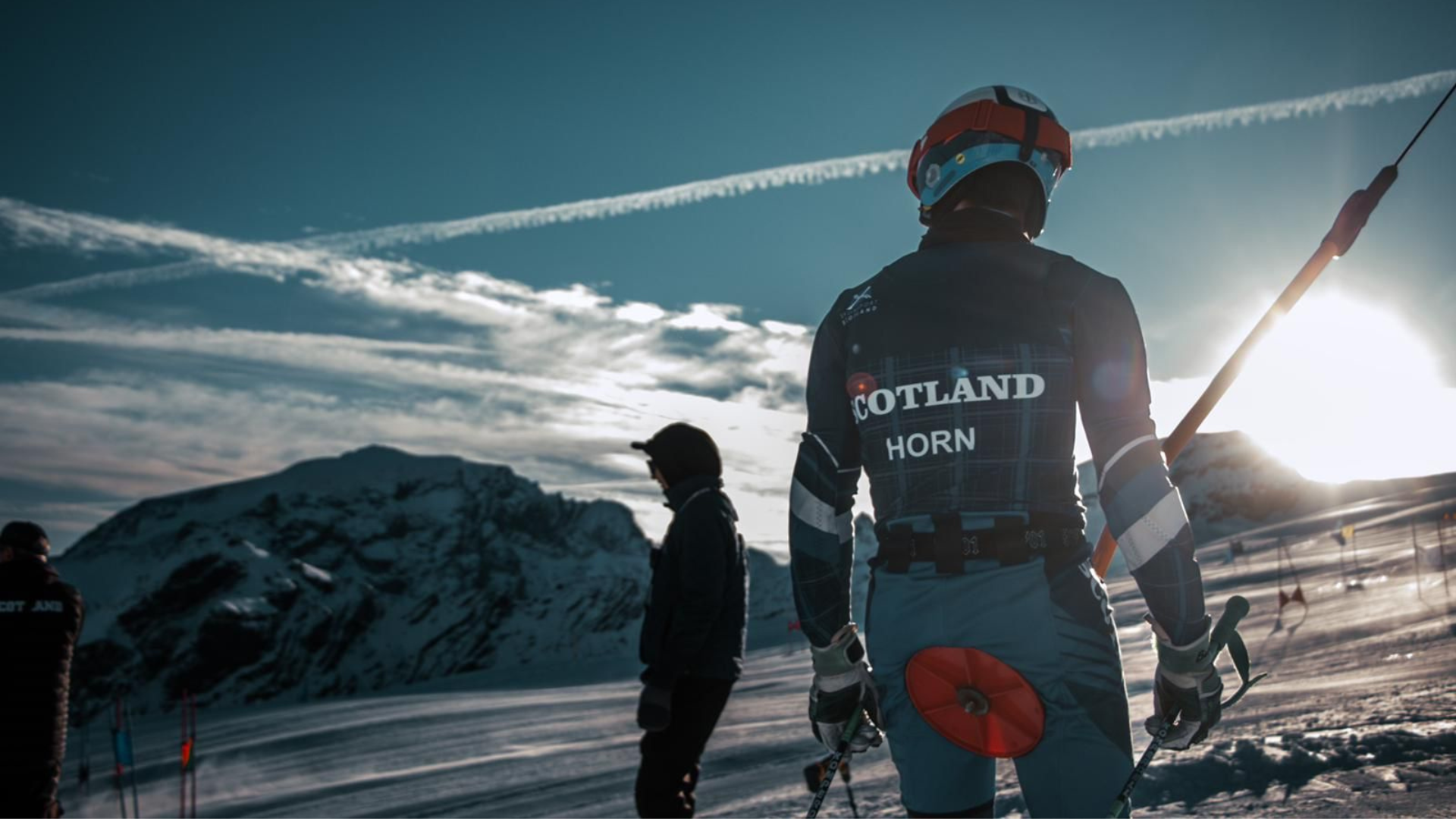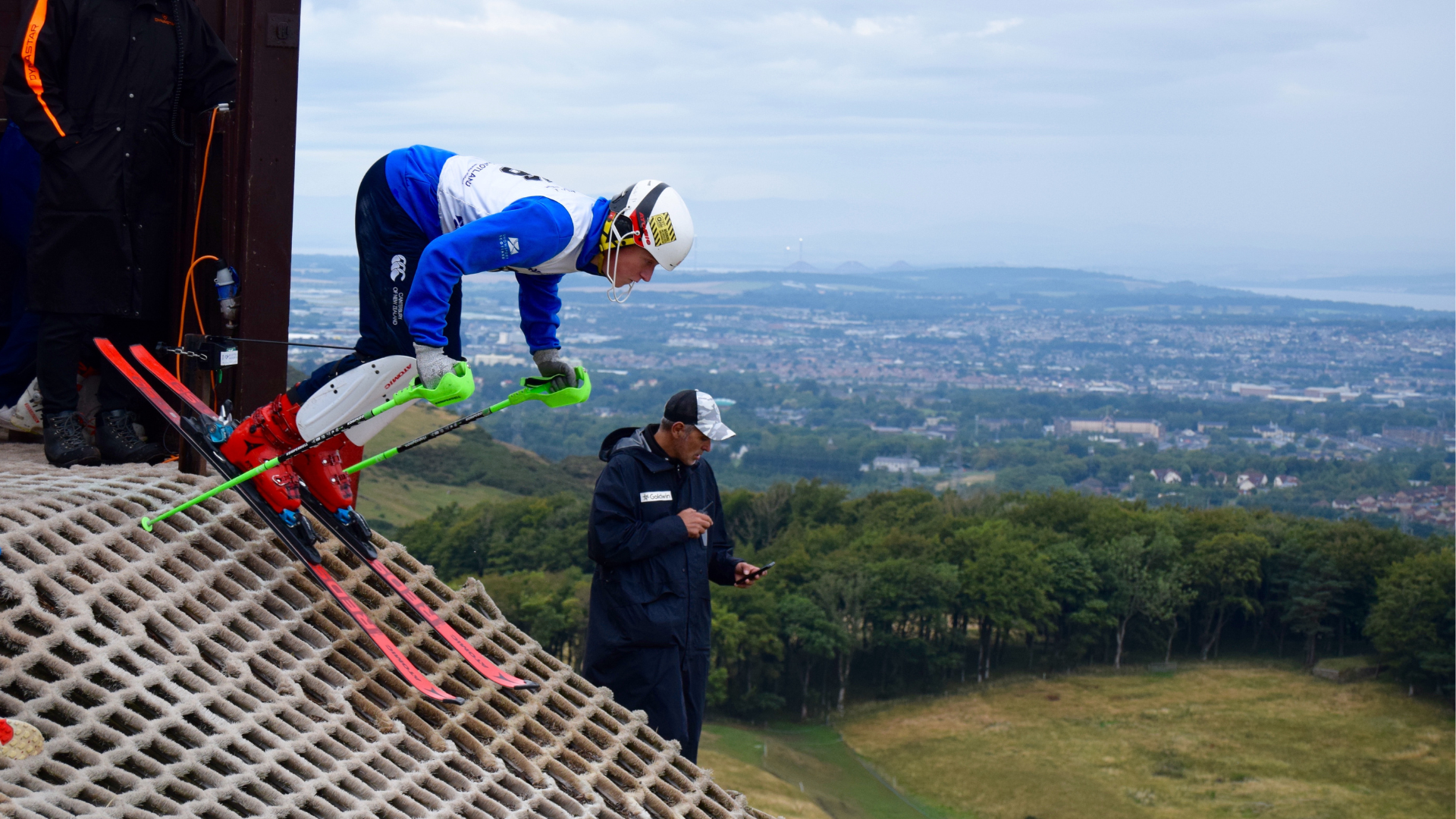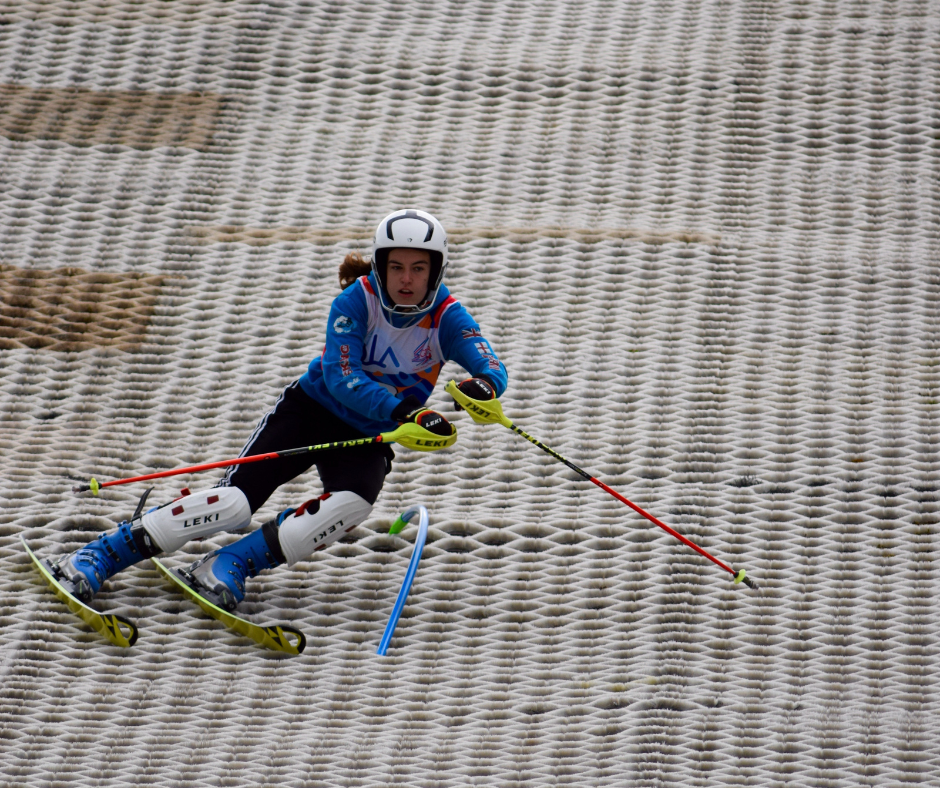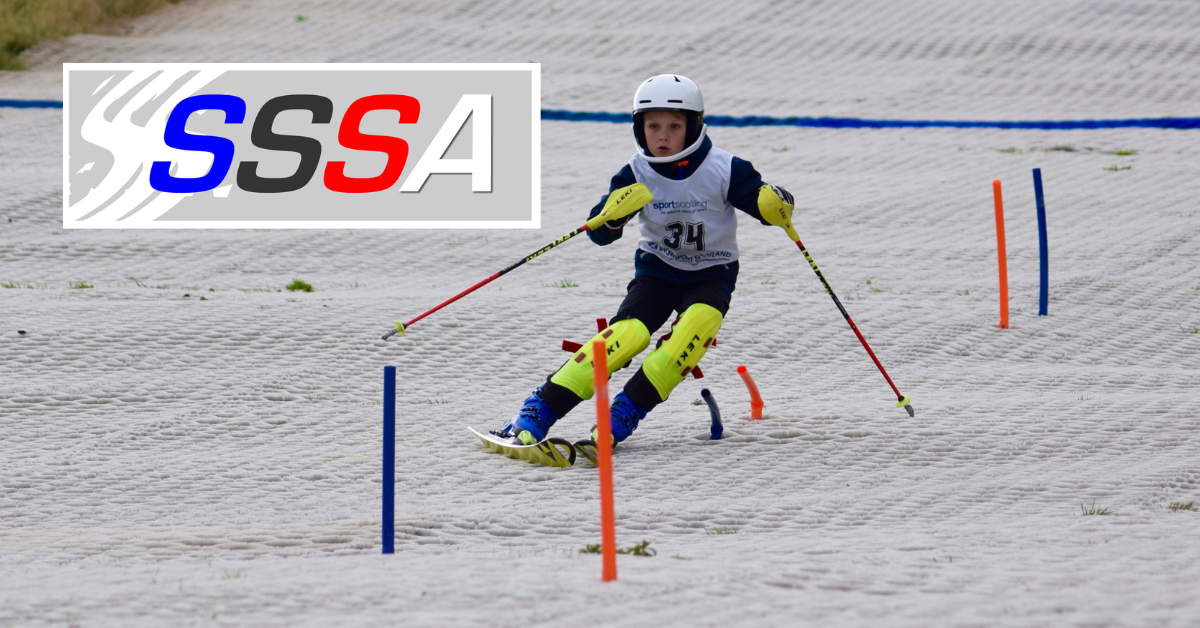
Alpine Racing
RESULTS
TEACH
PERFORMANCE
CLUBS
Once you have mastered the fundamentals of skiing you are ready to try racing…
Alpine Ski Racing, simply put, is skiing around poles or gates in the quickest possible time using alpine skis, also known as downhill skis. Modern day skis have fixed heels so your whole foot is attached to the ski and metal edges to allow the skier to grip as they travel down the slope.
There are a number of different disciplines in Alpine Ski Racing, which you can find out more about below.
In Scotland there are races out there for everyone, from complete novices to World Cup racers.
What is alpine racing?
Slalom
In Slalom, single gates are spaced close together necessitating quicker and shorter turns. The gates are set alternating between red and blue and are arranged in a variety of configurations to challenge the competitor. In this discipline because the distances between the gates are relatively small, ski racers take a fairly direct line and often knock the poles out of the way as they pass, which is known as blocking.
Giant Slalom
Giant Slalom, or GS as it is commonly known, involves skiing around a double gate with a panel or flag on them. They are spaced at a greater distance to each other than in slalom but less than in Super-G or Downhill. A GS race is generally composed of two runs, held on different courses on the same ski run.
Parallel Slalom
Parallel Slalom, or Dual or Pro Slalom as it is also referred to, consists of two courses set parallel to one another so competitors can compete head to head with one another. You will often see this run in a team format, almost like a relay. Both provide a great spectator experience.
Super Giant Slalom
Super-G or Super Giant Slalom, consists of widely set gates that racers must turn around. The course is set so that skiers must turn more than in downhill, though the speeds are still much higher than in giant slalom (hence the name). Each athlete only has one run to clock the best time.
Downhill
Downhill, often known as the Blue Riband event, for safety reasons only uses red gates. Racers get a number of inspections and at least one training run through the course before they race. The course is the longest and fastest of the alpine disciplines, and includes jumps and extended turns taken at high speed. The experience needed takes years to acquire. Each athlete has only one run to clock the best time.
Alpine Combined
Alpine Combined, is a speed race (Downhill or Super-G) and only one run of slalom, with both portions scheduled on the same day. A true test of the all round ski racer the winner is the skier with the fastest aggregate time.
Kombi
Kombi races, are often seen in childrens ski racing and can contain a variety of different combinations of features, some can be a combination of Slalom and Giant Slalom in one run, others can be a combination of Super-G and Giant Slalom, while some can also contain berms, rollers or jumps. They can be great for childrens overall ski development.
Where to start?
Getting into alpine racing starts off with joining an alpine race training club, where you will be coached and supported to develop your skills and knowledge to be able to compete successfully in a race.
Clubs offering alpine race training in Scotland can be found on our map below, or on our Clubs Page.
Equipment
When you first start off in alpine racing, you don’t have to splash the cash to give it a go. As your skills progress and you become more confident and faster in your delivery, it may be worth investing in some safer equipment that will help you carve easier. If you are considering entering competitions, we recommend going by the FIS specific equipment list before you buy, so you comply with all the regulations.
There are regular second hand sales at clubs and during the summer months at stores. It’s worth looking into these options if you are buying for children and know they will grow out of their equipment fairly quickly.
U10 Equipment
FIS approved helmet
Goggles that fit comfortably into the helmet
Only one pair of skis is recommended
Boot Bag that can store boots and helmet
Back protectors are permitted
U12 Equipment
U10 equipment plus:
Permitted to wear speed suits
Recommended to have 1 or 2 pairs of skis. Ask your coach.
Side zipped ski pants and/or shorts that can easily be removed before the race begins
Back protectors are recommended
U14 + Equipment
U10 & U12 equipment plus:
Many athletes have both slalom and GS specific skis
Many athletes have separate GS and Slalom poles
Athletes need slalom shin guards and slalom pole guards
It is highly recommended that athletes have a face guard on their slalom helmet and a mouth guard which they wear to protect their teeth. Many athletes have seperate GS and slalom helmet for convenience.
For Super G, athletes must use Super G specific skis.
Key Tips:
No used helmets
Buy boots that are the correct stiffness for your level
Source: skiisandbiikes.com
SSSA Races (Scottish Schools Association)
Each year the SSSA organises more than 30 schools snowsports events in Scotland that, in a good year can attract over 2500 primary and secondary pupils to participate. These events offer inclusive opportunities for all abilities of skier and snowboarder to enjoy and engage in fun, individual and team competitions.
Scottish Indoor Championships & Copper Horse Races 3+4 (Manchester)
The event is over two days and comprises of Slalom events across all age categories. The event will also be held alongside the GBR series.
Scottish Dryslope Alpine Championships 2025
On August 30th, at Midlothian Snowsports Centre (Hillend), is the Scottish Dryslope Alpine Championships. A great weekend to come and beat the best in Scotland! More info to follow…
Scottish FIS Races - Bormio 2025
Snowsport Scotland is delighted to confirm the Scottish FIS Races in Bormio, Italy from 6th-9th January 2025.
This event is organised by Snowsport Scotland.

Want to get into Alpine Performance?
GB Snowsport (GBS) is the national governing body for snowsports in the UK, managing elite British teams and the development pathway for those athletes. They select, manage and lead British teams to international events and provide opportunities for our athletes to achieve their full potential as individuals and as a team.
To find out more on the Scottish/GB Alpine Teams, or how to get onto the performance pathway, please visit our performance page.
Contact
Snowsport Scotland employs two alpine coaches to support the progression of alpine ski athletes through the pathway and into the GB Snowsports teams. This is done in partnership with clubs and GB Snowsports.
Please check our Clubs page to get in touch with your alpine skiing club or contact one of cross country coaches to find out about our national programmes.
National Performance Coach – Mark Vinter
mark@snowsportscotland.org
Alpine Racing Pathway Coach – Christy MacKinnnon
christy@snowsportscotland.org
We also have our dedicated Para-Alpine Pathway Coach. You can find more information on our Adaptive Snowsports page, or by contacting Blake:
Para-Alpine Pathway Coach - Blake Williams
blake@snowsportscotland.org










